Grow Strawberries at Home – imagine plucking juicy, sun-ripened strawberries straight from your own garden! There’s nothing quite like the taste of homegrown berries, and the satisfaction of nurturing them from tiny plants to a bountiful harvest. For centuries, cultivating strawberries has been a cherished tradition, from the sprawling gardens of European royalty to the humble plots of family farms. These vibrant red jewels have symbolized love, purity, and good fortune across various cultures, adding a touch of magic to our tables.
But let’s be honest, the thought of growing your own food can sometimes feel daunting. Maybe you think you don’t have enough space, or that gardening is too complicated. That’s where this DIY guide comes in! I’m here to show you that you absolutely can grow strawberries at home, no matter how small your space or how green your thumb currently is. We’ll explore simple, effective tricks and hacks that will transform your balcony, patio, or even a sunny windowsill into a thriving strawberry patch.
Why do you need these DIY tricks? Because store-bought strawberries often lack the intense flavor and sweetness of homegrown varieties. Plus, you’ll know exactly what’s going into your berries – no harmful pesticides or chemicals! Get ready to embark on a fun and rewarding journey, and discover the joy of harvesting your own delicious, organic strawberries. Let’s get started!
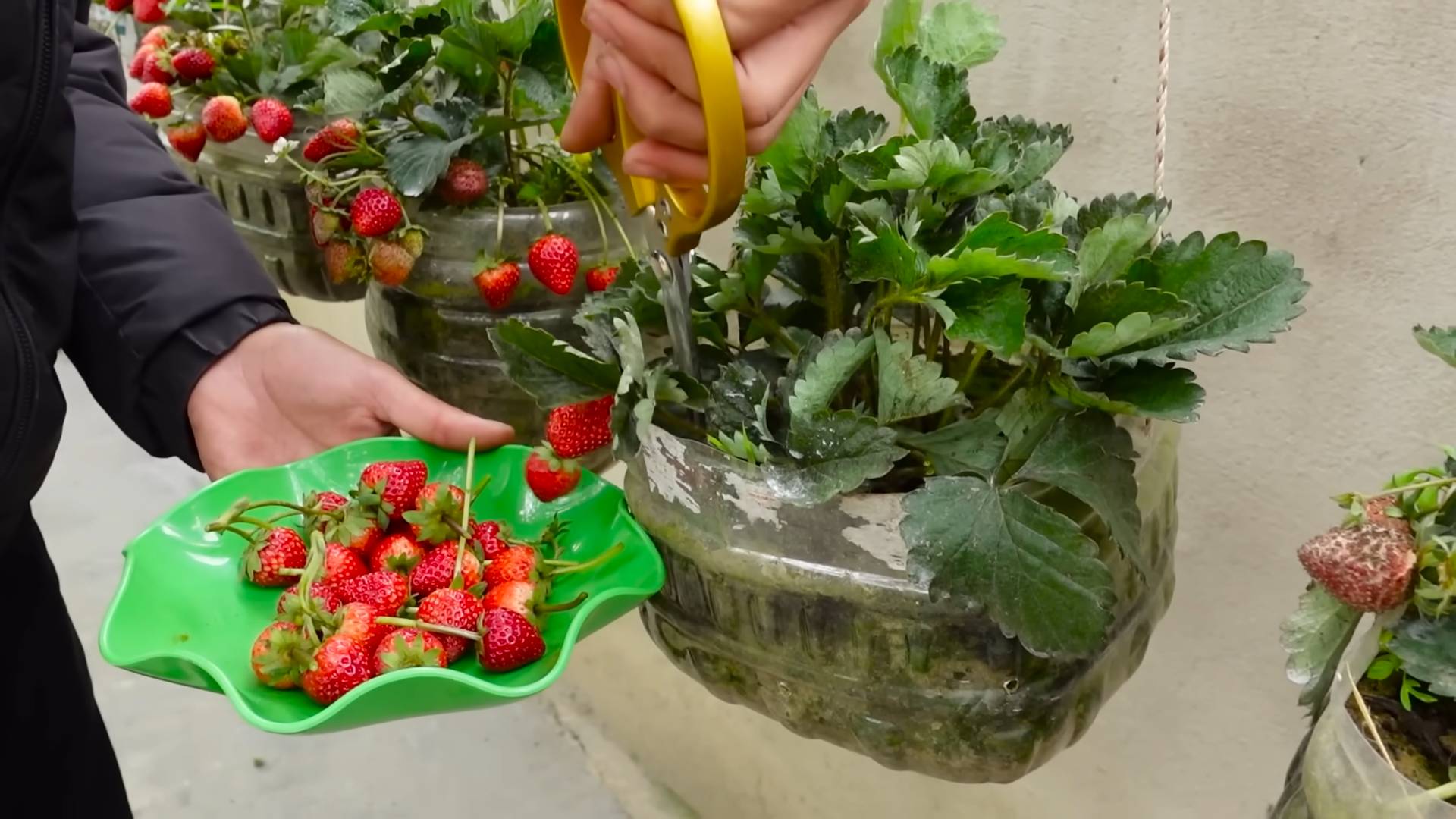
Grow Your Own Delicious Strawberries: A DIY Guide
Hey there, fellow gardening enthusiasts! I’m so excited to share my tried-and-true method for growing plump, juicy strawberries right at home. Forget those bland, store-bought berries – nothing beats the taste of homegrown goodness. This guide will walk you through everything you need to know, from choosing the right variety to harvesting your sweet reward. Let’s get started!
Choosing Your Strawberry Variety
Before we dive into the nitty-gritty, let’s talk about strawberry varieties. There are three main types, and each has its own unique characteristics:
* June-Bearing: These varieties produce one large crop of strawberries, typically in late spring or early summer (hence the name!). They’re great if you want a big batch for jam-making or freezing. Popular June-bearing varieties include ‘Chandler’, ‘Honeoye’, and ‘Earliglow’.
* Everbearing: Don’t let the name fool you – everbearing strawberries don’t produce fruit continuously. Instead, they offer two or three harvests throughout the growing season, usually in spring, summer, and fall. They’re a good choice if you want a more consistent supply of berries. Some popular everbearing varieties are ‘Ozark Beauty’, ‘Seascape’, and ‘Albion’.
* Day-Neutral: These varieties are similar to everbearing strawberries, but they’re less sensitive to day length. This means they’ll produce fruit more consistently throughout the growing season, as long as temperatures are moderate. ‘Tristar’, ‘Tribute’, and ‘San Andreas’ are excellent day-neutral options.
I personally love growing a mix of everbearing and day-neutral varieties to ensure a steady supply of strawberries from spring to fall. Consider your climate and desired harvest schedule when making your choice.
Preparing Your Strawberry Patch
Strawberries thrive in well-drained, slightly acidic soil (pH 5.5-6.5). Here’s how to prepare the perfect planting bed:
* Sunlight: Strawberries need at least 6-8 hours of direct sunlight per day. Choose a sunny spot in your garden.
* Soil Testing: I highly recommend testing your soil’s pH before planting. You can purchase a soil testing kit at most garden centers. If your soil is too alkaline, you can amend it with sulfur or peat moss.
* Soil Amendment: Strawberries love rich, fertile soil. Amend your soil with plenty of organic matter, such as compost, well-rotted manure, or leaf mold. This will improve drainage, aeration, and nutrient content.
* Weed Removal: Clear the planting area of all weeds and grass. Strawberries don’t compete well with weeds, so it’s important to start with a clean slate.
* Raised Beds (Optional): Consider planting your strawberries in raised beds. This improves drainage and makes it easier to control weeds.
Planting Your Strawberry Plants
Now for the fun part – planting! Whether you’re starting with bare-root plants or potted plants, here’s how to get them off to a good start:
* Timing: The best time to plant strawberries is in early spring or fall. This gives them time to establish their roots before the heat of summer or the cold of winter.
* Spacing: Space June-bearing strawberries about 18-24 inches apart in rows that are 3-4 feet apart. Everbearing and day-neutral varieties can be planted closer together, about 12 inches apart.
* Planting Depth: This is crucial! Make sure the crown of the plant (the point where the roots meet the stem) is level with the soil surface. Planting too deep can cause the crown to rot, while planting too shallow can dry out the roots.
* Watering: Water your newly planted strawberries thoroughly. Keep the soil consistently moist, but not soggy, until they’re established.
Step-by-Step Planting Instructions:
1. Prepare the Planting Hole: Dig a hole that’s wide enough to accommodate the roots of the strawberry plant.
2. Loosen the Roots: Gently loosen the roots of the plant before placing it in the hole. This encourages them to spread out and establish themselves.
3. Position the Plant: Place the plant in the hole, making sure the crown is level with the soil surface.
4. Backfill with Soil: Fill the hole with soil, gently firming it around the plant.
5. Water Thoroughly: Water the plant thoroughly to settle the soil and provide moisture.
6. Mulch (Optional): Apply a layer of mulch around the plants to help retain moisture, suppress weeds, and keep the berries clean. Straw is a popular choice for mulching strawberries (hence the name!).
Caring for Your Strawberry Plants
Once your strawberries are planted, it’s important to provide them with the care they need to thrive.
* Watering: Strawberries need consistent moisture, especially during fruit production. Water deeply and regularly, especially during dry spells. Avoid overhead watering, as this can promote fungal diseases. Drip irrigation is a great option for watering strawberries.
* Fertilizing: Fertilize your strawberries in early spring with a balanced fertilizer (e.g., 10-10-10). Avoid over-fertilizing, as this can lead to excessive foliage growth and reduced fruit production. I like to use a fertilizer specifically formulated for berries.
* Weed Control: Keep your strawberry patch free of weeds. Hand-pull weeds regularly, or use a hoe to cultivate the soil around the plants. Mulching can also help suppress weeds.
* Pest and Disease Control: Strawberries can be susceptible to various pests and diseases, such as slugs, snails, aphids, and fungal diseases. Inspect your plants regularly for signs of trouble. Use organic pest control methods whenever possible. For fungal diseases, ensure good air circulation and avoid overhead watering.
* Runner Management: June-bearing strawberries produce runners (long, trailing stems that develop new plants). If you want to maximize fruit production, remove the runners as they appear. Everbearing and day-neutral varieties also produce runners, but they don’t need to be removed as frequently. You can allow some runners to develop if you want to propagate new plants.
Protecting Your Strawberry Crop
Protecting your strawberries from pests and animals is crucial for a successful harvest.
* Bird Netting: Birds love strawberries just as much as we do! Cover your plants with bird netting to prevent them from feasting on your precious berries.
* Slugs and Snails: These slimy pests can wreak havoc on your strawberry plants. Use slug and snail bait, or hand-pick them off the plants at night. Copper tape around the perimeter of your strawberry patch can also deter them.
* Row Covers: Row covers can protect your plants from frost, insects, and birds. They’re especially useful in early spring when the plants are just starting to grow.
Harvesting Your Strawberries
The moment you’ve been waiting for – harvesting your delicious strawberries!
* Ripeness: Strawberries are ready to harvest when they’re fully red and slightly soft to the touch. They should also detach easily from the plant.
* Harvesting Technique: Gently grasp the stem of the strawberry and twist it to detach it from the plant. Avoid pulling on the berry, as this can damage the plant.
* Timing: Harvest your strawberries in the morning, after the dew has dried. This is when they’re at their peak flavor.
* Storage: Store your freshly harvested strawberries in the refrigerator. They’re best eaten within a few days of harvesting.
Extending Your Strawberry Season
Want to enjoy strawberries for even longer? Here are a few tips for extending your strawberry season:
* Succession Planting: Plant different varieties of strawberries that ripen at different times. This will give you a longer harvest window.
* Cold Frames: Use cold frames to protect your plants from frost in early spring and late fall. This can extend your growing season by several weeks.
* High Tunnels: High tunnels are larger structures that can provide even more protection from the elements. They’re a great option for serious strawberry growers.
Troubleshooting Common Strawberry Problems
Even with the best care, you may encounter some problems when growing strawberries. Here are a few common issues and how to address them:
* Small Berries: Small berries can be caused by a variety of factors, including poor pollination, insufficient watering, and nutrient deficiencies. Make sure your plants are getting enough sunlight, water, and fertilizer.
* Rotting Berries: Rotting berries can be caused by fungal diseases, such as gray mold. Ensure good air circulation and avoid overhead watering. Remove any infected berries promptly.
* Leaf Spot: Leaf spot is a fungal disease that causes brown spots on the leaves. Remove infected leaves and apply a fungicide if necessary.
* Pest Infestations: Inspect your plants regularly for signs of pests, such as aphids, spider mites
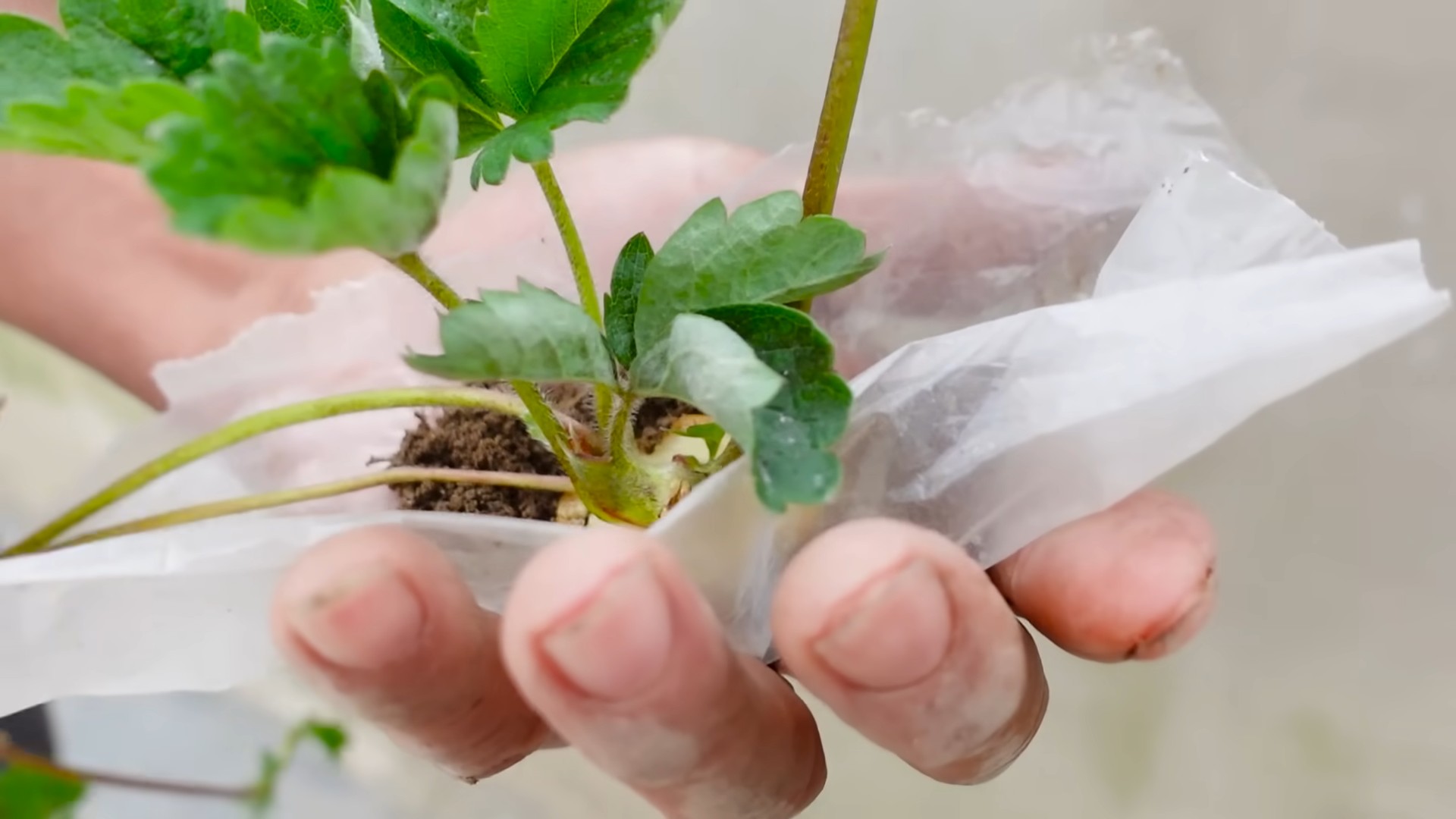
Conclusion
So, there you have it! Growing strawberries at home, especially using our simple DIY trick, is more than just a gardening project; it’s an investment in fresh, flavorful, and healthy eating. Forget those bland, store-bought berries that lack the vibrant taste of summer. With a little effort and our easy-to-follow guide, you can cultivate your own personal strawberry patch, bursting with juicy goodness.
Why is this DIY method a must-try? Because it’s accessible, affordable, and incredibly rewarding. You don’t need acres of land or a green thumb of steel. Our approach is designed for everyone, from apartment dwellers with limited balcony space to suburban families with sprawling gardens. It simplifies the process, making it less intimidating and more enjoyable. Plus, you’ll know exactly what goes into your strawberries – no harmful pesticides or artificial fertilizers, just pure, natural goodness.
But the benefits extend beyond just taste and health. Gardening is a fantastic stress reliever, a way to connect with nature, and a fun activity for the whole family. Imagine the joy of picking your own strawberries with your children or grandchildren, teaching them about the wonders of nature and the importance of healthy eating. It’s a memory-making experience that will last a lifetime.
Looking for variations? Absolutely! Once you’ve mastered the basics, feel free to experiment. Try different varieties of strawberries to discover your favorites. Some are sweeter, some are larger, and some are more disease-resistant. Consider using different types of containers, from hanging baskets to repurposed buckets, to add a touch of personality to your strawberry garden. You can also explore companion planting, pairing your strawberries with herbs like basil or thyme to deter pests and enhance flavor. For those in colder climates, consider using row covers or cold frames to extend your growing season. And if you’re feeling adventurous, try propagating new strawberry plants from runners to expand your patch even further.
Don’t be afraid to get creative and personalize your strawberry-growing experience. The possibilities are endless!
We’re confident that you’ll be amazed at how easy and rewarding it is to grow your own strawberries at home. So, grab your gardening gloves, gather your supplies, and get ready to embark on a delicious adventure. We encourage you to try our DIY trick and share your experiences with us. Post photos of your strawberry gardens on social media using #HomegrownStrawberries and let us know what worked best for you. We’re eager to see your successes and learn from your insights. Together, we can create a community of passionate strawberry growers, sharing tips, tricks, and the joy of homegrown goodness.
Start growing strawberries at home today and taste the difference!
Frequently Asked Questions (FAQ)
What is the best time of year to plant strawberries?
The ideal time to plant strawberries depends on your climate and the type of strawberry you’re growing. Generally, early spring (after the last frost) or late summer/early fall are the best times. Planting in the spring allows the plants to establish themselves before the heat of summer, while fall planting gives them a head start for the following spring. For everbearing varieties, you can often plant them throughout the growing season, but avoid planting during the hottest periods. Check your local climate and the specific recommendations for your chosen strawberry variety for the most accurate guidance.
What kind of soil do strawberries need?
Strawberries thrive in well-drained, slightly acidic soil with a pH between 5.5 and 6.5. The soil should be rich in organic matter to provide essential nutrients and retain moisture. Before planting, amend your soil with compost, aged manure, or other organic materials to improve its fertility and drainage. Avoid heavy clay soils, as they can become waterlogged and lead to root rot. If you have clay soil, consider growing your strawberries in raised beds or containers with a well-draining potting mix.
How much sunlight do strawberries need?
Strawberries need at least 6-8 hours of direct sunlight per day to produce abundant fruit. Choose a planting location that receives full sun throughout the growing season. If you live in a hot climate, some afternoon shade can be beneficial to prevent the plants from overheating. Insufficient sunlight can result in smaller berries and reduced yields.
How often should I water my strawberry plants?
Water your strawberry plants regularly, especially during dry periods. Aim to keep the soil consistently moist but not waterlogged. Water deeply and less frequently, rather than shallowly and more often, to encourage deep root growth. The frequency of watering will depend on your climate, soil type, and the stage of growth of your plants. Check the soil moisture regularly by sticking your finger into the soil. If the top inch feels dry, it’s time to water. Avoid overhead watering, as it can promote fungal diseases. Use a soaker hose or drip irrigation system to water at the base of the plants.
How do I fertilize my strawberry plants?
Fertilize your strawberry plants in the spring, after they have finished flowering, and again in the late summer/early fall. Use a balanced fertilizer specifically formulated for berries, following the instructions on the package. Avoid over-fertilizing, as it can lead to excessive foliage growth and reduced fruit production. Organic fertilizers, such as compost tea or fish emulsion, are also excellent options.
How do I protect my strawberries from pests and diseases?
Strawberries can be susceptible to various pests and diseases, including slugs, snails, aphids, spider mites, and fungal infections. To protect your plants, practice good garden hygiene by removing dead leaves and debris regularly. Use organic pest control methods, such as diatomaceous earth or insecticidal soap, to control pests. Ensure good air circulation around your plants to prevent fungal diseases. Consider using row covers or netting to protect your berries from birds and other animals. Choose disease-resistant strawberry varieties whenever possible.
How do I harvest strawberries?
Harvest your strawberries when they are fully ripe and have a deep red color. Gently twist the berry from the stem, leaving the green cap attached. Harvest in the morning, after the dew has dried, for the best flavor. Store your harvested strawberries in the refrigerator and use them within a few days.
What are strawberry runners and how do I manage them?
Strawberry runners are long, slender stems that grow out from the main plant and produce new plantlets at their tips. These runners are a natural way for strawberries to propagate. If you want to expand your strawberry patch, allow the runners to root in the soil. If you want to maintain the size of your patch or encourage larger fruit production, prune the runners regularly. Simply snip them off with scissors or pruning shears.
Can I grow strawberries in containers?
Yes, strawberries grow very well in containers. Choose a container that is at least 12 inches deep and wide, with drainage holes. Use a well-draining potting mix and water regularly. Container-grown strawberries may need more frequent watering and fertilizing than those grown in the ground.
What do I do with my strawberry plants in the winter?
In colder climates, protect your strawberry plants from freezing temperatures by mulching them with straw or pine needles. This will help insulate the roots and prevent them from being damaged by frost. You can also use row covers or cold frames for added protection. In milder climates, mulching may not be necessary, but it’s still a good idea to protect the plants from extreme weather conditions.

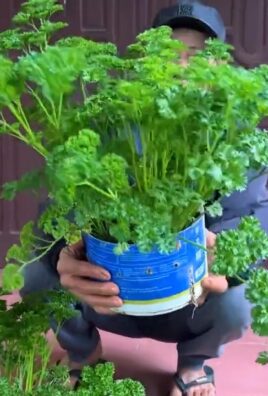
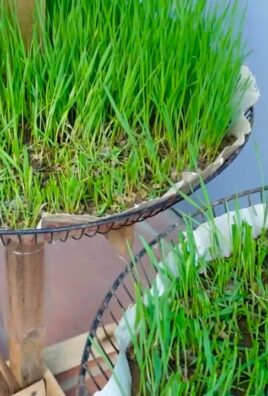
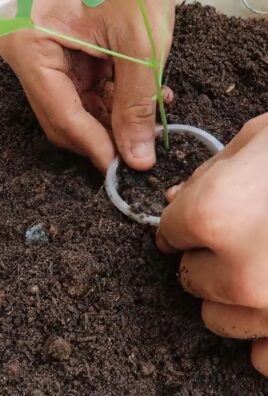
Leave a Comment